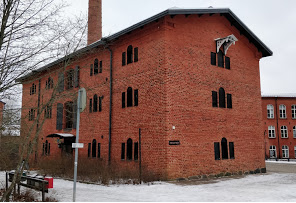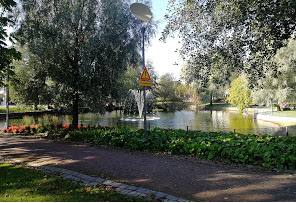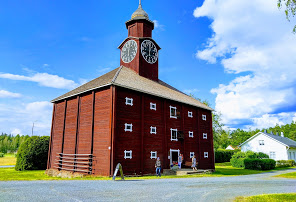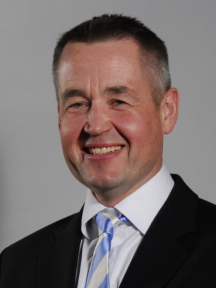Forssa,Finland 作者: 来源: 发布时间:2021-02-18
一、所属省或是州,具体位置,人口,面积
Forssa is a town and municipality of Finland. It is located almost in the centre of a triangle defined by the three largest major cities in Finland (Helsinki, Turku and Tampere), in the Tavastia Proper region. The town has a population of 17,021 (31 January 2019) and covers an area of 253.38 square kilometres (97.83 sq mi) of which 4.61 km2 (1.78 sq mi) is water. The population density is 68.42 inhabitants per square kilometre (177.2/sq mi). Forssa is a cozy and lively town of approximately 17,000 people where you can find diverse and high-quality services just around the corner, always nearby. Forssa is also the centre of an economic area of around 35,000 residents in housing, employment, commercial services, leisure and education.
Forssa is known for its annual big events like in the first weekend of August held Holjat Festival as well as car enthusiasts get together in Pick-Nick, the biggest event in Northern Europe. A tradition is also annual Suvi-ilta Maraton - the second biggest marathon event in Finland. Suvi-ilta Maraton takes place a weekend before Midsummer. There is also a fairly popular harness racing track in Forssa. The name Forssa comes from the Swedish word "fors", meaning rapids.
二、自然地理
1.地理条件
Forssa is located in the west of the Kanta-Häme landscape on the Loimijoki River. The neighboring municipalities of Forssa are Tammela in the southeast,
Jokioinen and Humppila in the west and Urjala in the north. The city is the center of the administrative community of the same name (seutukunta); many residents of neighboring communities commute to Forssa for work. Forssa lies in the densely populated triangle between the southern Finnish cities of Helsinki, Turku and Tampere. The nearest major city is Hämeenlinna 56 kilometers east, the distance to the capital Helsinki is around 110 kilometers. Forssa is located in the heart of Southern Finland at the intersection of highways 2 and 10. More than half of the population of Finland lives within 150 kilometres from Forssa, and the largest cities in Finland are only an hour’s drive away. An excellent location is one of Forssa’s benefits for both residents and the business sector. The town is small, located roughly in the center of the triangle formed by the country's three main cities: Tampere 87 km, Turku 88 km and Helsinki 110 km. The regional capital Hämeenlinna is 56 km away.
It constitutes an important road junction. Indeed, this is where two important national cross roads, national 2 connecting Pori to Helsinki and national 10 between Turku and Tuulos via Hämeenlinna. The neighboring municipalities are Tammela to the east and south, Jokioinen to the west, Humppila to the northwest and finally Urjala to the north (Pirkanmaa).
2. 交通情况
The city was the end point of the Jokioinen – Forssa railway line, a narrow-gauge railway line from which a 14 km section from Humppila to Jokioinen is operated as a museum railway by Jokioisten Museorautatie. From 1899 to 1973, the railway line in Forssa was followed by an industrial train electrified with 500 V, which supplied numerous industrial companies in the city with the same gauge.
三、经济发展和规模
The Finnish economic crisis in the early 1990s was a major blow to Forssa's development. Since then, the city's population, which was over 20,000 in the 1980s, has been steadily declining. The actual city of Forssa consists of the districts Haudankorva, Järvenpää, Kaikula, Keskusta, Kalliomäki, Korkeavaha, Kuhala, Kuusto, Lamminranta, Linikkala, Ojalanmäki, Paavola, Pikku-Muolaa, Pispanmäberg and Täölöila, Talsoöila. In addition, the 254.6 square kilometer municipal area includes part of the rural area with the villages of Koijärvi and Matku as well as the villages of Ahoniitty, Haisio, Ilvesoja, Järvenpää, Kojo, Lunttila, Vuolle, Lempää, Rekirikko, Kukkapää, Vuoltu, Kalsu, Savalsin and Suonpää.
Forssa was created when the Swedish manufacturer Axel Wilhelm Wahren founded a spinning mill on a rapids of the Loimijoki in 1847. In the following years, a populous town developed around the factory. Until the 1970s, the textile industry was the most important industry in Forssa. The place, which is strongly influenced by industry, was one of the strongholds of the Finnish labor movement: at its party congress in Forssa in 1903, the Finnish Workers' Party adopted its new program and adopted the current name of the Social Democratic Party of Finland. In 1923 Forssa was released from the community of Tammela and raised to an independent market town. In 1964 Forssa finally became a city, which was enlarged again in 1969 through the incorporation of Koijärvi.
四、产业特点重点项目
Until the 1970s, the textile industry was the most important industry in Forssa. The place, which is strongly influenced by industry, was one of the strongholds of the Finnish workers 'movement: at its party congress in Forssa in 1903, the Finnish Workers' Party adopted its new program and adopted the current name of the Social Democratic Party of Finland.
They are not part of the textile industry and the printing industry in Forssa. The company was established in the State of Sweden by HK Ruokatalo. The Finnish trade union was established in the 1990s as a result of the accession of the Forssa. According to the provisions of the Rules of Procedure, which in the 1980s were reduced to about 20,000, the constant ab.
Today, in addition to the textile industry, food production and printing are important industries in Forssa. The largest company based in the city is the food producer HK Ruokatalo.
五、风景名胜,景点
1. Forssa Museum

The museum is located in the heart of the former Spinning Mill, nowadays a lively cultural centre of Forssa.
Museum´s exhibition, City of Colourful Cloth, tells how Forssa evolved from a group of farming villages in the middle of 19th Century into a modern industrial city.
Gallery Moletti with changing exhibitions.
Forssa museum was elected as a Museum of the year 2014, and was a nominee for the European Museum 2015.
2. Ankkalammi park

In 1845, the clay needed to rebuild the Kuhala mill was purchased from Ankkalaminpuisto. This is where the ponds of Ankkalamminpuisto originated. Kauppala bought the areas in 1926 from Oy Finlayson Forssa Ab and in 1959 from the United Bank of Finland. In 1928, Kauppala decided to develop the area into a park, and in 1949, commercial gardener Eino Eramo made the first official park plan for the area. The first birds, 2 geese, were handed over by merchant H. Lindfors for the summer. Since 1960, Lammi has had a mute swan couple. Ankkalamminpuisto is home to Finland's second largest maple maple: Acer platanoides “Drummondii”. In 2004, the starting point was to preserve the old trees in the area as much as possible as the backbone of the new planting. New vegetation was planted together. 60 different species or varieties and about 8,600 pieces. The park also houses a pumpable well, built in 1862 and donated to the city of Forssa by Forssa Regional Cooperative Bank in 1982.
3. Grain Storehouse

Art gallery that was formerly a grain storehouse of the Urpola farm. The storehouse was carefully renovated in 2005, and it has three layers of interesting old times space for contemporary art.
The space is divided into small ”rooms” with grain washed old wooden walls. Because of a lack of heating, the best season for exhibitions is during summer time. Short exhibitions and events have been arranged during Easter and before Christmas.
六、历史文化
1.历史
Forssa was created when the Swedish manufacturer Axel Wilhelm Wahren founded a spinning mill on a rapids of the Loimijoki in 1847. In the following years, a populous town developed around the factory.
In 1923 Forssa was released from the community of Tammela and raised to an independent market town. In 1964 Forssa finally became a city, which was enlarged again in 1969 through the incorporation of Koijärvi.
The history of Forssa began in 1847 when the Swedish-born Axel Wilhelm Wahren (1814–1885) established a cotton spinning mill by the Loimijoki River. As industrialisation gained speed, the town grew and developed closely together with the factory. In addition to the factories, Wahren commissioned the construction of apartments, a hospital, a library, a shop and a school.
The market town (township) of Forssa was established in 1923, and Forssa was awarded town privileges in 1964. The highways to Turku, Pori and Helsinki completed around the same time expedited the town’s development.
2. 文化
Forssa has a plethora of hobby opportunities. Sports lovers can enjoy the tracks and exercising areas, sports associations and fields and the Viihdeuimala Vesihelmi Waterpark, which provide excellent settings for exercising. When it comes to culture, the Forssa theatre, music school, school of visual arts and courses at the adult education centre provide meaningful hobbies. In addition, the ample event offering, especially in the summertime, colours the town’s life. The town was co-host of the 1982 FIBA Europe Under-16 Championship for Women.
七、其他信息
The town of long industrial tradition is nowadays especially known for the companies operating in the food and environment industries. Significant employers also include technology, construction and graphic industries. The town creates the preconditions for the growth, networking and internationalisation of companies and promotes the new businesses finding their place in Forssa. The Bright Green urban strategy emphasises a diverse business structure and innovative technological solutions—not forgetting an environmentally friendly approach and sustainable development.
The Forssa Vocational Institute (FAI) offers vocational education and trains students for jobs in the following fields: Culture, Natural Sciences, Catering and Domestic Services, Social services, Health and Care, Technology, Communication and Transport, Social sciences, Business Economics and Administration. Faktia that works as part of FAI provides tailored adult education and related competence development and training entities.
Central actors in the development and research operations include the Natural Resources Institute’s Jokioinen unit and Häme University of Applied Sciences’ Forssa unit that hosts the degree programmes in Bioeconomy, Information and Communication Technology, Sustainable Development and Nursing.
The Forssa town has the Bright Green Forssa Sustainable Vitality city strategy 2030 plans. All the operations of the city of Forssa abserve three viewpoints of sustainable vitality: Ecological sustainability, Economical sustainability, and Social and cultural sustainability. Forssa is a verdant town on the banks of the Loimijoki River, with plenty of parks and comfortable options and alternatives for living and housing. The market square and the connected park in the town centre is the heart of the town, a meeting and refreshment point loved by the residents.
Our town appreciates the diverse nature and the valuable urban landscape characterised by the cultural-historical environment deriving from the colourful history of Forssa as a textile industry town dating back to the 1800s.
In 2015, the Ministry of the Environment awarded Forssa the esteemed status of a national urban park. The most famous landmarks of Forssa are the redbrick factory buildings in the Kutomo and Kehräämö areas. Now, Kutomo hosts a lively shopping centre, and the beautiful milieu in Kehräämö is known as a centre of education and culture. Forssa is a bright green town, and its environment is well cared for. Looking after the environment also provides work for hundreds of Forssa residents. Forssa is a Finnish pioneer in the circular economy that takes into account the environment and nature.
八、联系方式

Mayor of forssa: Jari Kesäniemi
Address: Turuntie 18, PO Box 62, 30101 Forssa, Finland
Phone number: 03 41 411
Fax 03 422 6583
Invoicing address: The Town of Forssa, Laskut, PO Box 64, 30101 FORSSA, FINLAND
Official e-mail: kirjaamo(at)forssa.fi
Website: https://www.forssa.fi/in-english/
